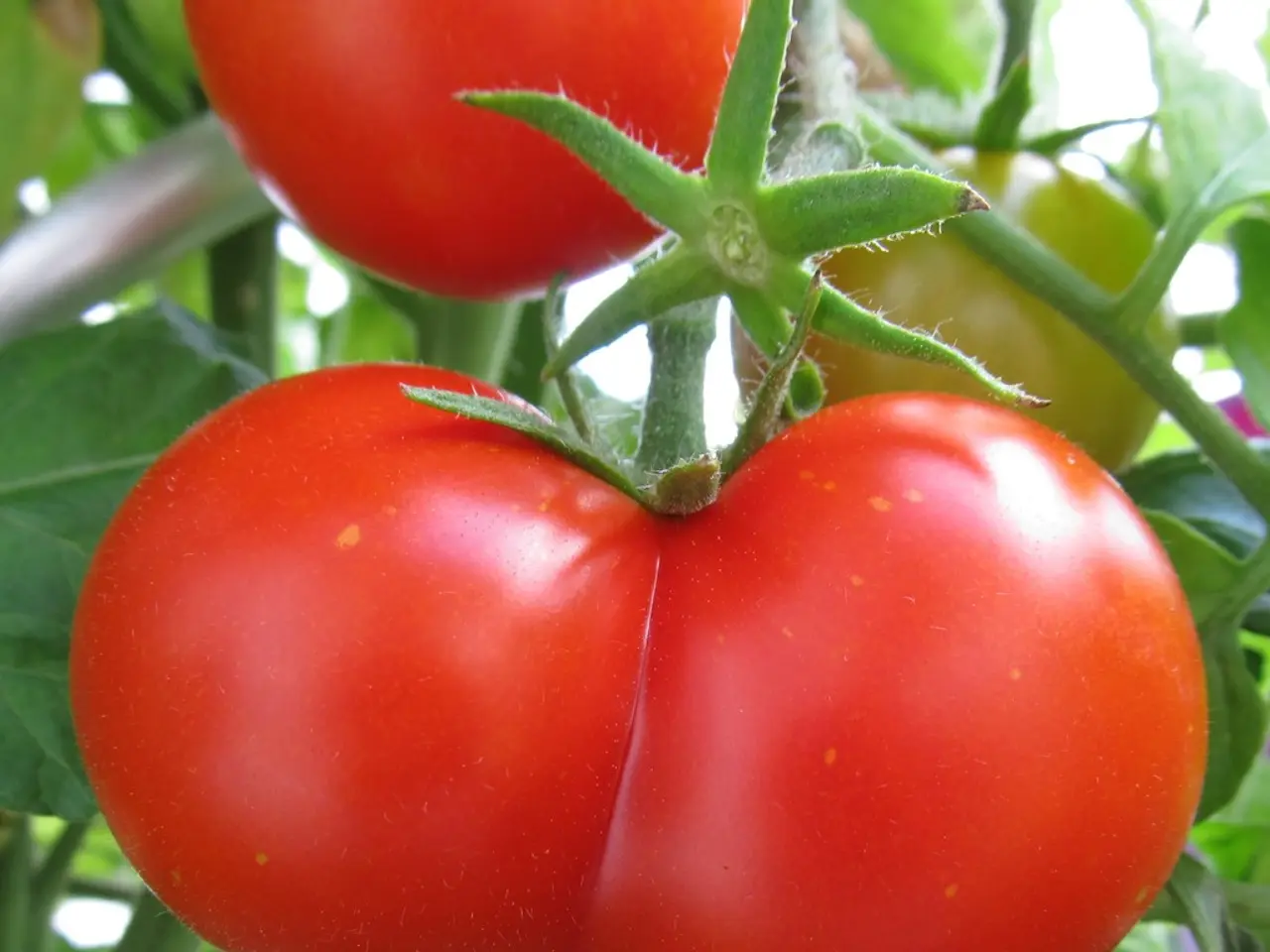Tomatoes under threat: Fitoftor's offensive and preventive measures for last-minute rescue
In the world of gardening, one fungal disease that poses a significant threat to tomato plants is Phytophthora blight. This article provides a guide on how to effectively manage and prevent this destructive pathogen in home gardens.
Phytophthora is a fungus that thrives in wet and humid conditions, making moisture a primary factor that aids its growth and spread [1]. To combat this, gardeners are advised to maintain proper plant spacing (24–36 inches) and prune lower leaves and suckers to improve airflow, which reduces leaf wetness and blocks conditions favorable to the pathogen [1].
Watering tomatoes at the base early in the morning using drip irrigation or soaker hoses is also crucial to avoid wetting foliage. Overhead watering, which spreads spores and increases humidity, should be avoided [1]. Applying organic mulch (e.g., straw, shredded leaves) around plants can help maintain soil moisture, prevent soil splash (a vector for spores), and block spores from reaching foliage [1][2].
Gardeners are encouraged to act promptly when they notice brown spots on tomato leaves or fruits due to Phytophthora blight. The initial step in managing the disease is to remove all affected leaves, branches, and fruits [3]. It is essential to dispose of infected plants promptly by bagging them to prevent spore spread [2]. After the growing season, clear all plant debris and avoid composting infected material to reduce overwintering spores [2].
Spraying the entire tomato plant, including the underside of leaves and stems, with copper-containing preparations can create a protective film against Phytophthora [4]. Repeating the copper-containing treatment before rains or cold snaps can help prevent Phytophthora activity [5]. In commercial or high-value settings, combining resistant varieties with appropriate fungicide applications can provide additional late blight protection [5].
In addition, biopreparations based on bacterial strains can create a living shield against Phytophthora for neighboring plots [6]. Experienced gardeners understand that delaying action is not an option when dealing with Phytophthora blight. Even tomatoes with small spots can be saved with a hot bath for 10-15 seconds [7].
Lastly, reducing stagnant, damp conditions can slow down Phytophthora growth. In a greenhouse, keeping doors and windows open can help reduce humidity and prevent Phytophthora [8]. Fruits starting to turn pink should be picked and ripened in a dry, warm place [9]. After harvesting, removing all plant residues from the plot and disinfecting supports and tools can help prevent Phytophthora [2].
By combining cultural practices, resistant varieties, sanitation, and moisture control, gardeners can effectively prevent and manage Phytophthora blight in their home gardens [1][2][5].
- In the realm of health-and-wellness, understanding and implementing proper gardening practices can help prevent the spread of Phytophthora blight, a destructive fungal disease affecting tomato plants.
- Incidentally, the scientific community has discovered that applying bacterial strains as biopreparations can create a natural defense against Phytophthora in neighboring gardens, making gardening a beneficial part of the broader field of science.
- Furthermore, adopting a lifestyle that includes maintaining a dry and well-ventilated home garden, along with regular home-and-garden tasks like pruning, watering, and using organic mulch, can markedly reduce the risk of Phytophthora blight affecting one's home-grown tomatoes.




